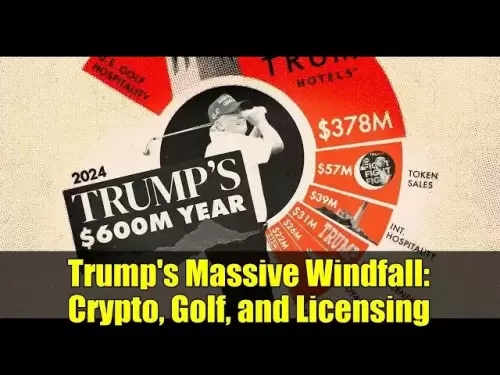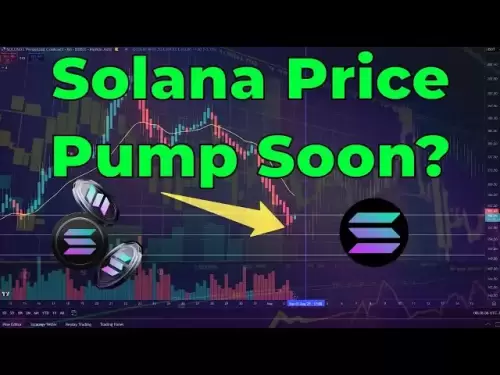-
 Bitcoin
Bitcoin $113900
0.47% -
 Ethereum
Ethereum $3491
-0.42% -
 XRP
XRP $2.876
-1.87% -
 Tether USDt
Tether USDt $1.000
0.03% -
 BNB
BNB $750.4
-0.49% -
 Solana
Solana $161.3
-1.76% -
 USDC
USDC $0.9999
0.01% -
 TRON
TRON $0.3242
-0.91% -
 Dogecoin
Dogecoin $0.1985
-0.19% -
 Cardano
Cardano $0.7241
1.49% -
 Hyperliquid
Hyperliquid $38.05
0.56% -
 Stellar
Stellar $0.3896
2.92% -
 Sui
Sui $3.442
0.61% -
 Chainlink
Chainlink $16.18
0.92% -
 Bitcoin Cash
Bitcoin Cash $541.0
0.51% -
 Hedera
Hedera $0.2427
2.67% -
 Ethena USDe
Ethena USDe $1.001
0.03% -
 Avalanche
Avalanche $21.39
-0.68% -
 Toncoin
Toncoin $3.669
2.25% -
 Litecoin
Litecoin $109.5
0.95% -
 UNUS SED LEO
UNUS SED LEO $8.966
0.11% -
 Shiba Inu
Shiba Inu $0.00001218
0.77% -
 Polkadot
Polkadot $3.598
1.23% -
 Uniswap
Uniswap $9.164
1.14% -
 Monero
Monero $297.7
1.21% -
 Dai
Dai $1.000
0.00% -
 Bitget Token
Bitget Token $4.328
0.84% -
 Pepe
Pepe $0.00001047
1.05% -
 Cronos
Cronos $0.1329
0.70% -
 Aave
Aave $257.6
1.03%
How is NFT different from traditional art investment?
NFTs revolutionize art investment with digital ownership, increased liquidity, artist royalties, and interactivity, but also bring market volatility and environmental concerns.
Apr 28, 2025 at 03:28 am
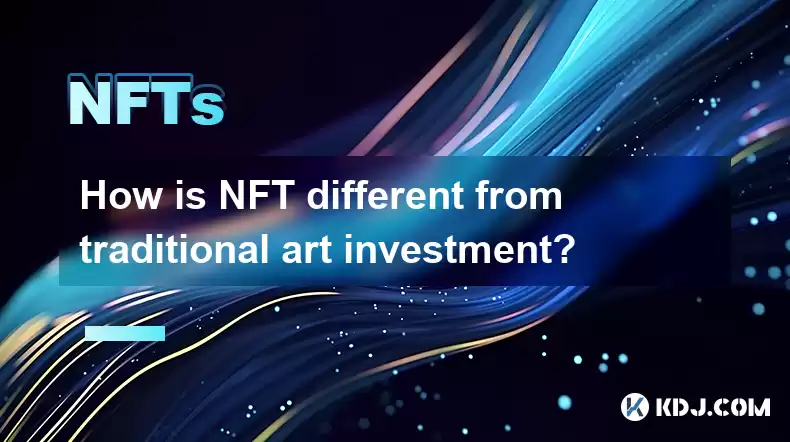
The world of art investment has been revolutionized by the introduction of Non-Fungible Tokens (NFTs). These digital assets have created a new paradigm for collectors, artists, and investors alike. But how exactly do NFTs differ from traditional art investments? Let's delve into the key distinctions that set these two forms of art investment apart.
Ownership and Authenticity
One of the most significant differences between NFTs and traditional art investments lies in the concept of ownership and authenticity. In the traditional art world, ownership is typically established through physical possession of the artwork and a paper trail of provenance. This can sometimes be difficult to verify, especially with older pieces that may have changed hands numerous times.
On the other hand, NFTs provide a digital certificate of ownership that is recorded on the blockchain. This immutable ledger ensures that the authenticity and ownership of the NFT can be easily verified. Each NFT has a unique identifier, making it impossible to replicate or counterfeit. This level of transparency and security is a significant advantage over traditional art investments.
Liquidity and Accessibility
Another key difference between NFTs and traditional art investments is the level of liquidity and accessibility. Traditional art investments are often illiquid, with buyers and sellers needing to find each other through galleries, auctions, or private sales. The process can be time-consuming and may require significant resources.
In contrast, NFTs can be bought and sold on various online marketplaces with relative ease. These platforms allow for instant transactions and provide a global marketplace for buyers and sellers. This increased liquidity makes it easier for investors to enter and exit positions, potentially reducing the risk associated with art investments.
Furthermore, NFTs have democratized access to art investments. Traditional art investments often require significant capital, limiting participation to wealthy individuals or institutions. NFTs, however, can be purchased for a wide range of prices, allowing more people to participate in the art market.
Royalties and Artist Benefits
A unique feature of NFTs that sets them apart from traditional art investments is the ability to include royalties for artists. In the traditional art world, artists typically receive a one-time payment for their work and do not benefit from subsequent sales. This can be a significant disadvantage for artists, as the value of their work may appreciate over time.
With NFTs, artists can program royalties into the smart contract associated with the token. This means that every time the NFT is resold, the artist receives a percentage of the sale price. This ongoing revenue stream can provide significant benefits to artists and incentivize the creation of new works.
Digital Nature and Interactivity
NFTs are inherently digital, which opens up new possibilities for art investment that are not available with traditional art. Traditional art is typically static, existing as a physical object that can be viewed but not interacted with. While some traditional art forms, like performance art, can be more interactive, they still lack the digital interactivity of NFTs.
NFTs can incorporate various forms of digital media, such as video, audio, and interactive elements. This allows for a more immersive and engaging experience for collectors. Some NFTs even offer additional benefits, such as access to exclusive content or events, further enhancing their value.
Market Dynamics and Speculation
The market dynamics of NFTs and traditional art investments also differ significantly. Traditional art investments are often driven by established artists and institutions, with prices influenced by factors such as reputation, historical significance, and cultural impact. While speculation exists in the traditional art market, it is generally more stable and less volatile than the NFT market.
The NFT market, on the other hand, is often driven by speculation and hype. New artists can quickly gain popularity and see their works fetch high prices, sometimes with little regard for traditional artistic merit. This can lead to significant price volatility, with some NFTs appreciating rapidly in value while others may lose value just as quickly.
This speculative nature of the NFT market can be both a blessing and a curse for investors. On one hand, it provides the potential for high returns, but on the other hand, it also increases the risk associated with these investments.
Environmental Concerns
A final difference between NFTs and traditional art investments that is worth considering is the environmental impact. Traditional art investments have a relatively low environmental footprint, primarily associated with the production and transportation of physical artworks.
In contrast, the creation and trading of NFTs can have a significant environmental impact due to the energy consumption associated with blockchain technology. Some blockchains, like Ethereum, use a proof-of-work consensus mechanism that requires substantial computing power and energy. This has led to concerns about the sustainability of NFTs and has prompted some artists and collectors to seek out more eco-friendly alternatives.
Frequently Asked Questions
Q: Can traditional artworks be tokenized as NFTs?
A: Yes, it is possible to tokenize traditional artworks as NFTs. This process involves creating a digital representation of the physical artwork and minting it as an NFT on a blockchain. This can provide additional benefits, such as increased liquidity and the ability to include royalties for the artist. However, the tokenization of traditional artworks is still a relatively new concept and may not be widely accepted or recognized in the traditional art world.
Q: Are NFTs considered a good long-term investment?
A: The long-term investment potential of NFTs is a topic of debate. Some argue that the speculative nature of the market makes NFTs a risky investment, while others believe that certain NFTs may appreciate in value over time, especially if they are created by established artists or have significant cultural or historical value. As with any investment, it is important for investors to conduct thorough research and consider their risk tolerance before investing in NFTs.
Q: How do taxes on NFT investments compare to taxes on traditional art investments?
A: The tax treatment of NFT investments can vary depending on the jurisdiction and the specific circumstances of the investment. In general, NFTs are treated as property for tax purposes, similar to traditional art investments. This means that capital gains tax may apply when an NFT is sold for a profit. However, the digital nature of NFTs and the potential for royalties can complicate the tax situation, and investors should consult with a tax professional to understand their specific obligations.
Q: Can NFTs be used to invest in fractional ownership of traditional artworks?
A: Yes, NFTs can be used to facilitate fractional ownership of traditional artworks. By tokenizing a physical artwork and dividing it into multiple NFTs, investors can purchase a fraction of the artwork, allowing for more accessible and liquid investments. This concept is still in its early stages, but it has the potential to democratize access to high-value artworks and provide new opportunities for investors.
Disclaimer:info@kdj.com
The information provided is not trading advice. kdj.com does not assume any responsibility for any investments made based on the information provided in this article. Cryptocurrencies are highly volatile and it is highly recommended that you invest with caution after thorough research!
If you believe that the content used on this website infringes your copyright, please contact us immediately (info@kdj.com) and we will delete it promptly.
- Navigating the Meme Coin Mania: Cold Wallets, SHIB, and DOGE in 2025
- 2025-08-03 22:30:16
- Bitcoin's Price Fall and Scrutiny: What's a New Yorker to Think?
- 2025-08-03 22:30:16
- Altcoins Most Searched: Hedera (HBAR) and the ETF Hype
- 2025-08-03 20:50:16
- Arbitrage Adventures: Creditcoin, Kaspa, and Chasing Crypto Profits
- 2025-08-03 20:30:16
- Claude HIVE & Code Agents: Faster Coding Revolution?
- 2025-08-03 20:50:16
- Trump Media, Bitcoin, and Crypto: A Surprising Alliance in the Making?
- 2025-08-03 21:30:16
Related knowledge
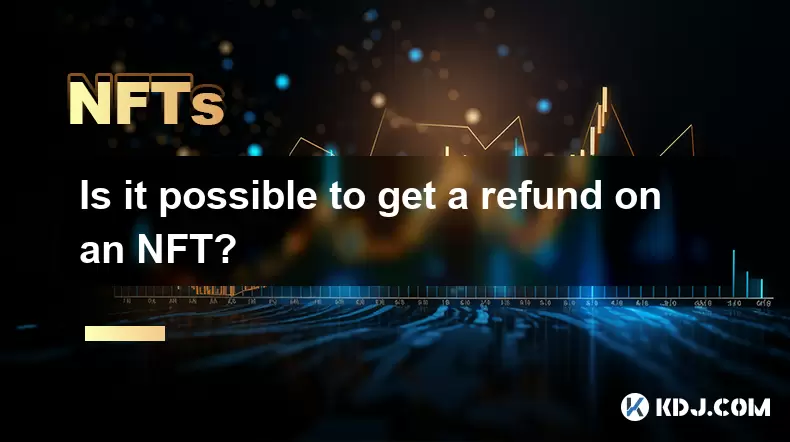
Is it possible to get a refund on an NFT?
Jul 21,2025 at 08:35pm
Understanding NFT Transactions and RefundsWhen you purchase an NFT (Non-Fungible Token), the transaction is typically recorded on a blockchain, making...
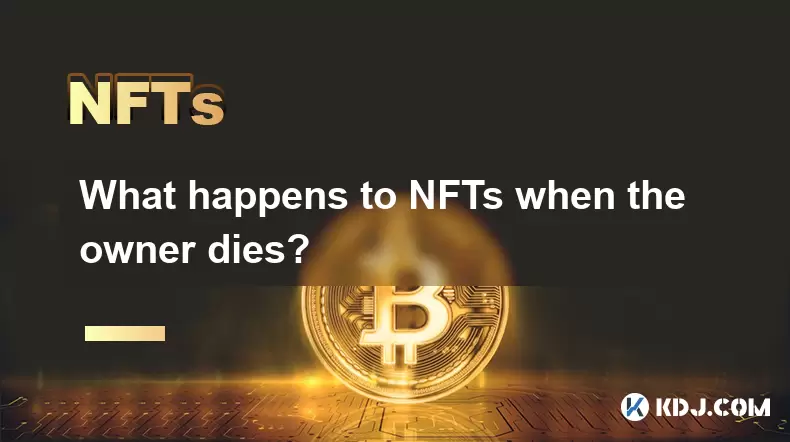
What happens to NFTs when the owner dies?
Jul 22,2025 at 02:43pm
Legal Ownership and Digital AssetsWhen an individual owns NFTs, the question of what happens to these assets upon their death is a pressing one. NFTs ...
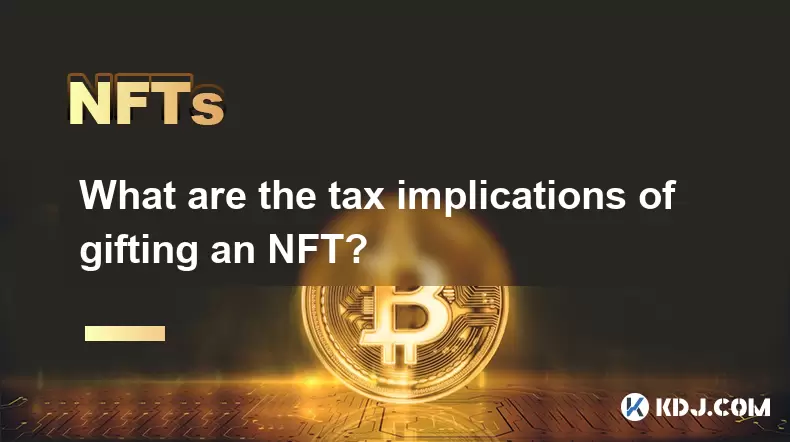
What are the tax implications of gifting an NFT?
Jul 19,2025 at 04:21am
Understanding the Basics of NFT GiftingGifting a Non-Fungible Token (NFT) involves transferring ownership from one individual to another without recei...
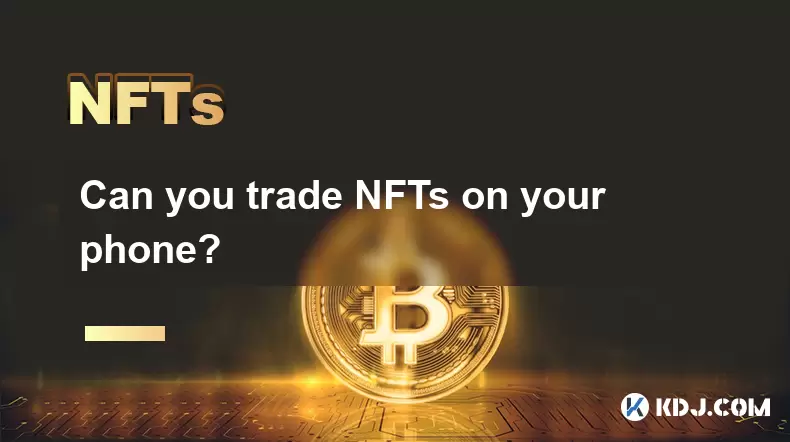
Can you trade NFTs on your phone?
Jul 18,2025 at 04:29am
Trading NFTs on Mobile DevicesYes, you can trade NFTs on your phone, and the process has become increasingly streamlined thanks to a variety of mobile...
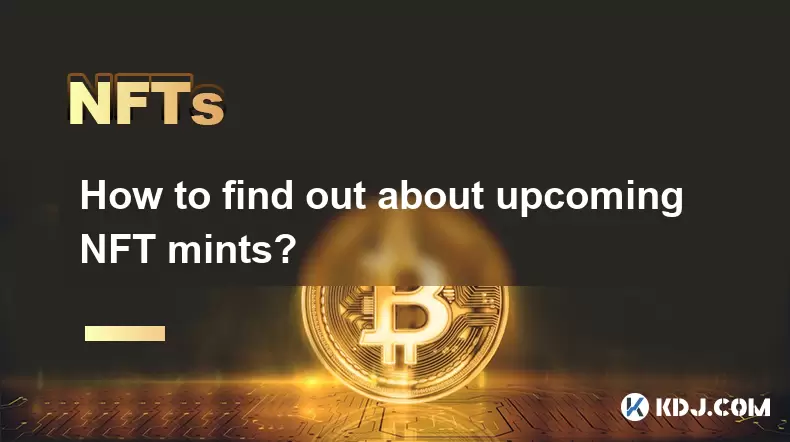
How to find out about upcoming NFT mints?
Jul 18,2025 at 11:50am
Exploring NFT Minting OpportunitiesUnderstanding the landscape of upcoming NFT mints is crucial for collectors, investors, and creators who wish to st...
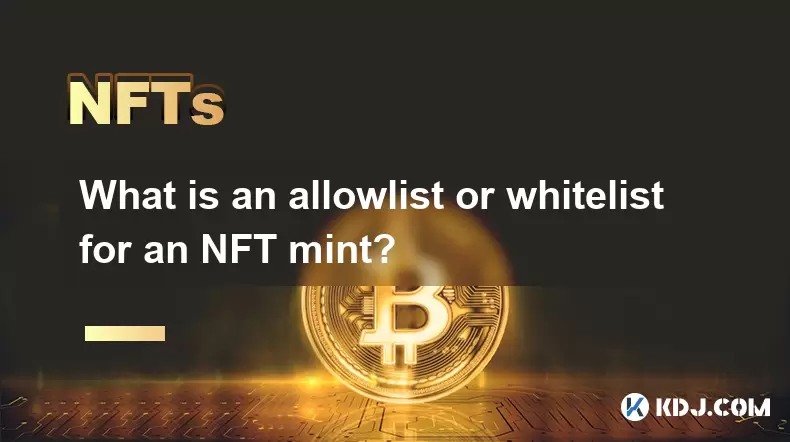
What is an allowlist or whitelist for an NFT mint?
Jul 20,2025 at 07:14pm
Understanding the Concept of an Allowlist for NFT MintingAn allowlist, also commonly referred to as a whitelist, is a mechanism used in the NFT mintin...

Is it possible to get a refund on an NFT?
Jul 21,2025 at 08:35pm
Understanding NFT Transactions and RefundsWhen you purchase an NFT (Non-Fungible Token), the transaction is typically recorded on a blockchain, making...

What happens to NFTs when the owner dies?
Jul 22,2025 at 02:43pm
Legal Ownership and Digital AssetsWhen an individual owns NFTs, the question of what happens to these assets upon their death is a pressing one. NFTs ...

What are the tax implications of gifting an NFT?
Jul 19,2025 at 04:21am
Understanding the Basics of NFT GiftingGifting a Non-Fungible Token (NFT) involves transferring ownership from one individual to another without recei...

Can you trade NFTs on your phone?
Jul 18,2025 at 04:29am
Trading NFTs on Mobile DevicesYes, you can trade NFTs on your phone, and the process has become increasingly streamlined thanks to a variety of mobile...

How to find out about upcoming NFT mints?
Jul 18,2025 at 11:50am
Exploring NFT Minting OpportunitiesUnderstanding the landscape of upcoming NFT mints is crucial for collectors, investors, and creators who wish to st...

What is an allowlist or whitelist for an NFT mint?
Jul 20,2025 at 07:14pm
Understanding the Concept of an Allowlist for NFT MintingAn allowlist, also commonly referred to as a whitelist, is a mechanism used in the NFT mintin...
See all articles























